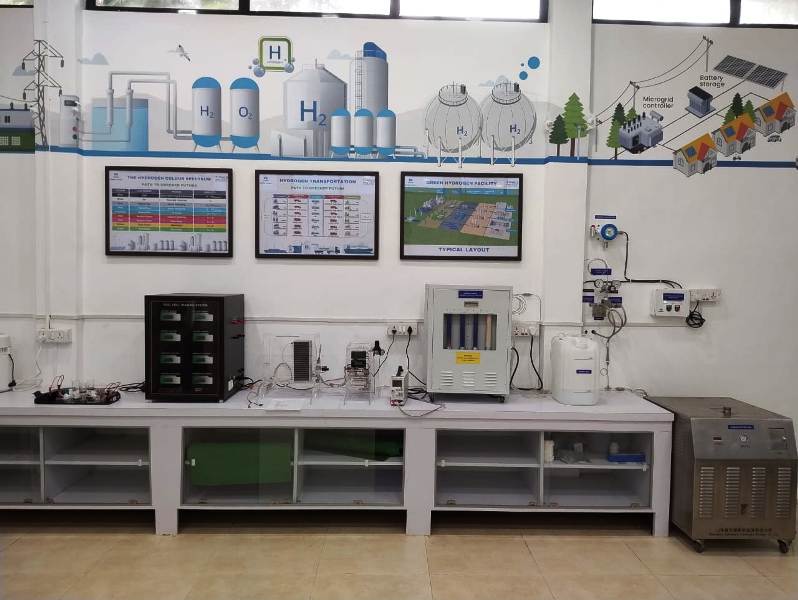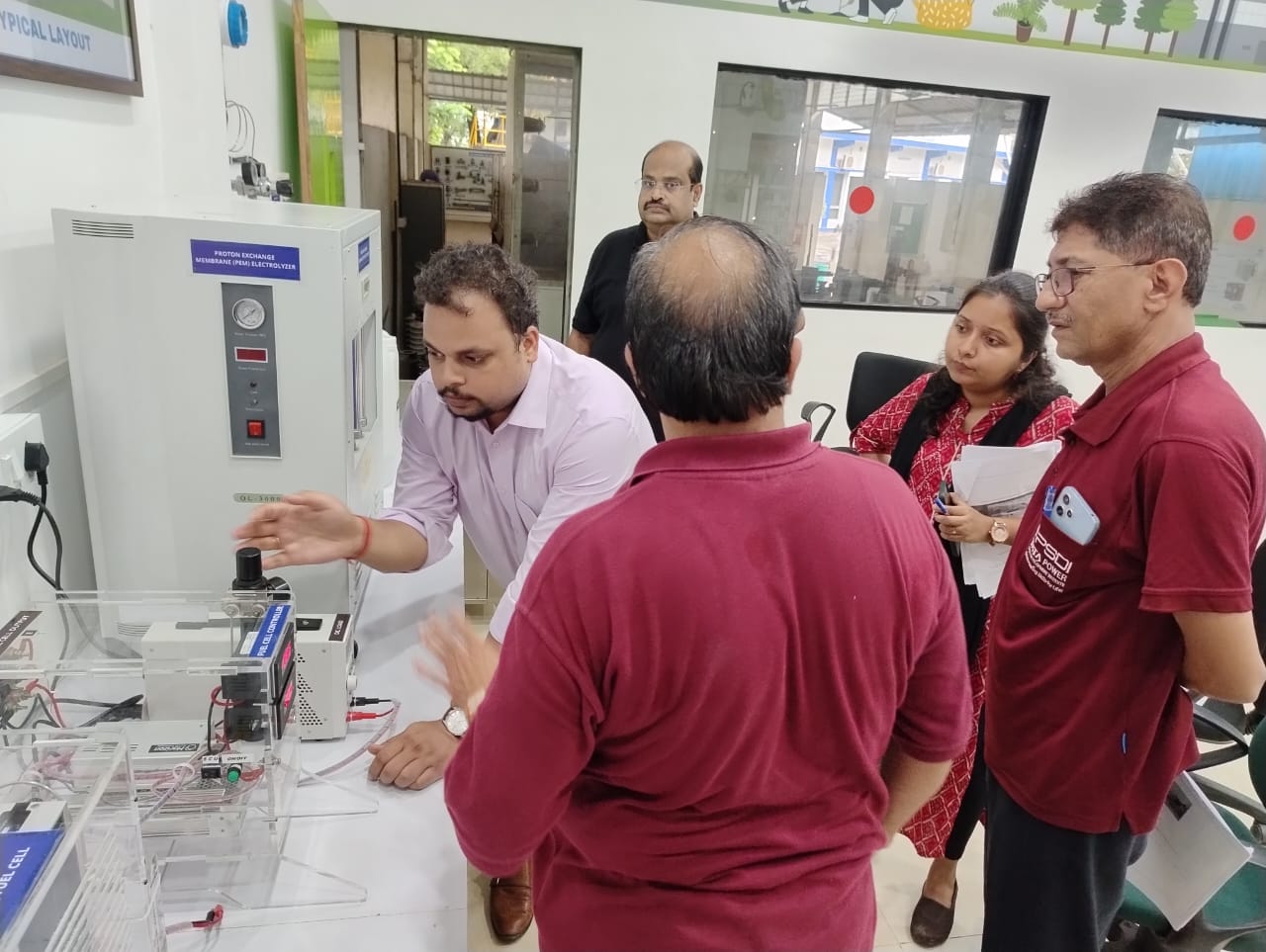1.
Water Purification stage
For hydrogen production,
deionized/distilled water is required as impure water can break down into
hydrogen + oxygen + harmful gases or metals, to ensure the purity of hydrogen,
distilled water is the best water. Ecosense’s Green Hydrogen Lab
comes with a small water distiller which can produce distilled water at the rate
of 1l / hour.
2.
Hydrogen Production Stage
For hydrogen production two
different electrolysers are used in Green Hydrogen lab which are capable of
generating 3000 ml/min of hydrogen simultaneously as well as individually. Both
electrolysers are based on different technologies one is PEM electrolyser and
the other one is traditional Alkaline electrolyser. As this lab is an educational
lab, to teach students how different types of Electrolysers work, Ecosense
installed two different types of electrolysers instead of one. Here are the key
differences between the two electrolyser technologies:
| Parameters | Alkaline Electrolyzer | PEM Electrolyzer |
| Electrolyte | Liquid potassium hydroxide (KOH) or sodium
hydroxide (NaOH) solution | Solid proton-conducting polymer membrane |
| Operating Temperature | 60–80°C | 50–70°C |
| Current Density | Lower (0.2–0.4 A/cm²) | Higher (1–2 A/cm²) |
| Startup Time | Longer | Shorter |
| Gas Purity | Lower (requires separation processes) | Higher (directly obtained) |
| Durability | Higher (less prone to degradation) | Lower (membrane can degrade over time) |
| Efficiency | Lower (70–80%) | Higher (80–90%) |
| Cost | Lower initial cost | Higher initial cost |
| Electrode Material | Nickel-based materials | Precious metals like platinum and iridium |
| Scalability | More suited for large-scale applications | Better for smaller, decentralized systems |
Both Electrolyzers get
distilled water from the same source and starts producing hydrogen and oxygen.
The oxygen gas is released in the environment whereas hydrogen gas is collected
in a storage tank.
1.
Hydrogen Purification and Storage
Hydrogen gas coming out from
the Electrolyzers contain moisture, to separate moisture from gas a gas
moisture separator is installed along with a desiccant based dryer which soaks
up any residual moisture. The gas is then stored in a hydrogen storage tank.
2.
Electricity generation using Hydrogen
A PEM Fuel Cell is used to
generate DC Electricity using hydrogen.
A Proton Exchange Membrane
(PEM) fuel cell generates electricity by using hydrogen gas as fuel. At the
anode, hydrogen molecules are split into protons and electrons. The protons
pass through a proton-conducting membrane to the cathode, while the electrons
travel through an external circuit, creating an electric current. In a
self-humidified, open-cathode PEM fuel cell, ambient air is used directly at
the cathode, eliminating the need for a dedicated oxygen supply. The protons
and electrons combine with the oxygen from the air at the cathode, forming
water as a byproduct. This type of fuel cell is efficient, compact, and
well-suited for portable and small-scale applications.
3.
AC /DC Loading
The fuel cell is then further
connected to a charge controller, battery and inverter so that actual loads can
be connected to the system.
This is a perfect teaching
system for students who want to enter in the similar field.


